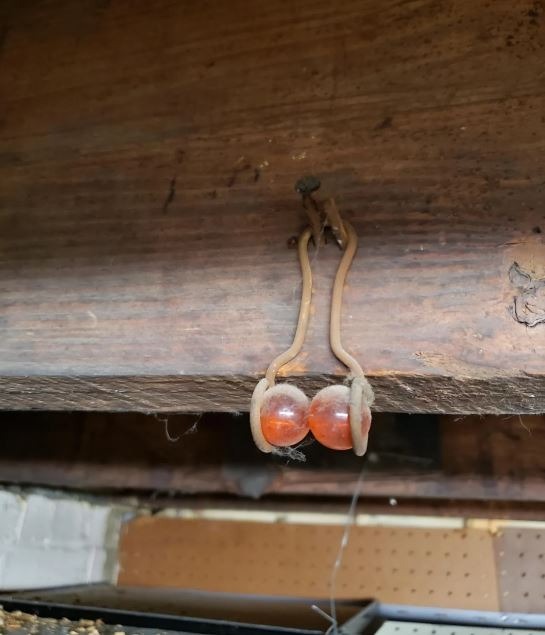In an era dominated by sleek technology and rapid innovation, there’s a unique joy in rediscovering the quiet charm of objects crafted with care in the past. The antique marble razor knife sharpener is one such treasure — a testament to a time when function and artistry were inseparable, and even the most utilitarian items were built to last for generations. Holding one is like holding a fragment of history, a gentle reminder that even everyday tools were once created with meticulous attention and enduring purpose.
Originating in the late 19th and early 20th centuries, these sharpeners are remarkable examples of engineering and aesthetic precision. Featuring robust bases made from wood or metal, each sharpener includes a steel rod or blade and, most notably, a marble or glass sphere that serves as the honing surface. It is this marble or glass element that transforms the object from a simple tool into a piece of elegance — practical in function, yet undeniably refined.
The artisans who made these sharpeners adhered to a philosophy that seems almost foreign today. Every detail was considered, balancing utility with beauty. The polished marble sphere wasn’t merely decorative; its smooth surface provided an ideal edge for blades. Glass balls, often hand-blown, reflected light in subtle ways, elevating an otherwise mundane task into a nearly meditative ritual.
In homes and workshops across Europe and America, these sharpeners were indispensable to barbers, chefs, and craftsmen. They worked by carefully drawing the steel edge across the marble or glass ball, maintaining precision without removing too much material. Unlike modern electric devices, which rely on abrasive force, this method emphasized patience and control, producing a blade honed to perfection rather than aggressively stripped.
Collectors today admire not just their function, but the story their materials tell. Marble, often sourced from Italy or Greece, offered natural veins and unique patterns, ensuring each piece was one-of-a-kind. Glass spheres carried tiny bubbles or imperfections, subtle signs of human touch in a pre-mass-production era. Each flaw was a mark of authenticity, a quiet signature of the maker’s hand.
The bases, equally crafted with care, often featured rich woods like oak or mahogany, polished to a warm sheen. Metal versions incorporated brass or cast iron, sometimes engraved with intricate designs or manufacturer logos. Built to endure, many sharpeners still operate perfectly today, their elegance untouched by time.
What makes the marble razor knife sharpener truly captivating is its philosophy. It represents an era when tools were respected, maintained, and cherished. Knives and razors were not disposable; they were preserved, honored, and relied upon for decades. There was an inherent understanding that a well-made item, cared for properly, could last a lifetime.
In today’s throwaway culture, this idea feels radical. Owning such a sharpener is an homage to craftsmanship over convenience, a reminder that durability and beauty can coexist. These tools are not only historical artifacts but practical instruments still valued by chefs, woodworking enthusiasts, and anyone who appreciates precision. The marble or glass surfaces offer delicate control unmatched by mechanical sharpeners, turning routine maintenance into a calming, tactile experience.
Beyond practicality, antique sharpeners serve as decorative pieces. Their polished marble and translucent glass catch the eye, adding character to kitchens, workshops, and studies. They whisper stories of barbers preparing for morning shaves, chefs sharpening knives before service, and artisans perfecting blades for their craft. Each item, whether on display or in use, conveys a tangible connection to a bygone era.
Collectors often speak of an addictive fascination. Some search for rare models, discontinued European brands, or unique design variants. Others restore them, polishing marble and oiling wood to revive decades of wear. Each restored sharpener carries echoes of the hands that once relied on it, bridging the past and present in a tangible, functional form.
Though they may seem curiosities today, these sharpeners embody enduring values. They demonstrate that even routine tasks deserve artistry, that functionality need not forsake beauty. They are emblems of precision, patience, and permanence — ideals that resonate deeply in a modern world often obsessed with speed.
One can almost picture a craftsman a century ago, sitting by a window, honing a blade on a marble sphere, sunlight glinting across its surface, steel producing a rhythmic, soothing sound. That quiet, human moment is captured in the design itself — ordinary yet profoundly meaningful.
Whether displayed on a shelf or still actively used, the antique marble razor knife sharpener carries with it dignity and history. It prompts reflection on the advances of modern life while reminding us of what has been lost: a world where time, care, and artistry were inseparable.
Owning one goes beyond nostalgia. It is a chance to preserve history, to honor a time when efficiency was entwined with elegance. In every smooth marble curve and well-crafted wooden base lies a story of ingenuity and dedication — proof that truly excellent design endures.
To see, touch, and use one is to understand a deeper truth: progress doesn’t always mean discarding the past. Sometimes it’s about rediscovery — appreciating the quiet perfection of a handcrafted tool that continues to perform exactly as intended, even more than a century after its creation.
